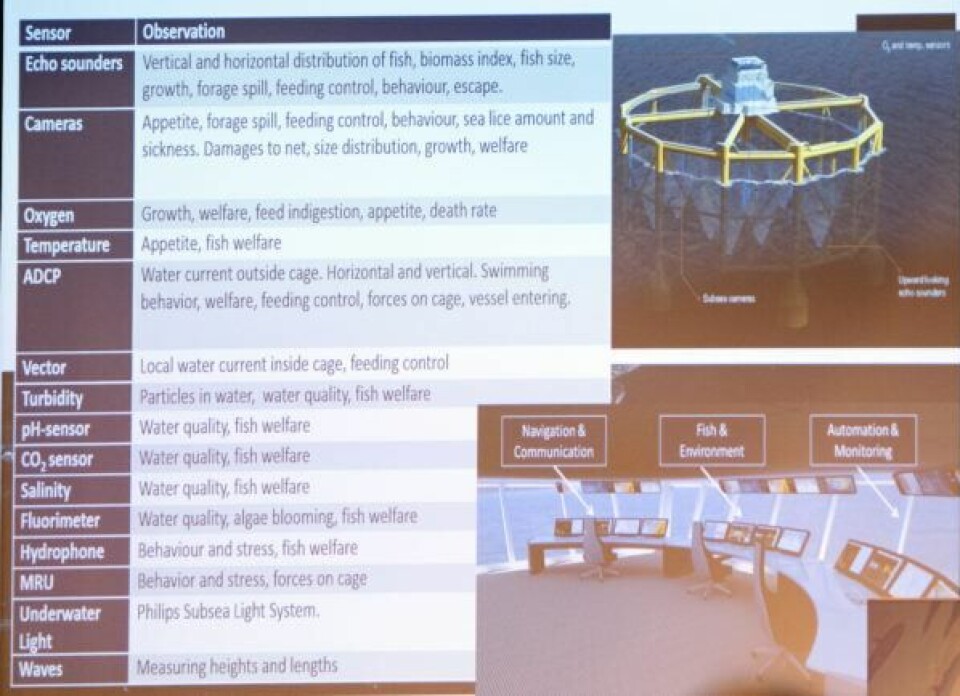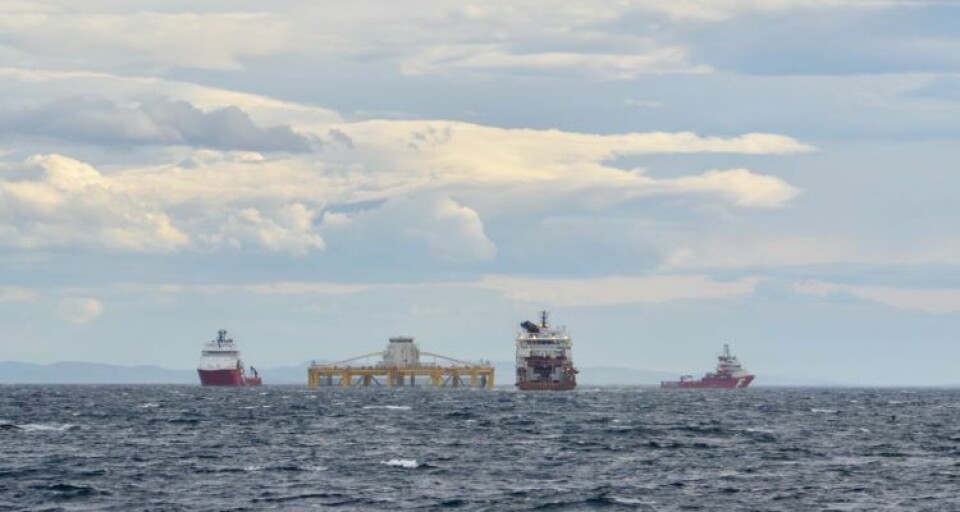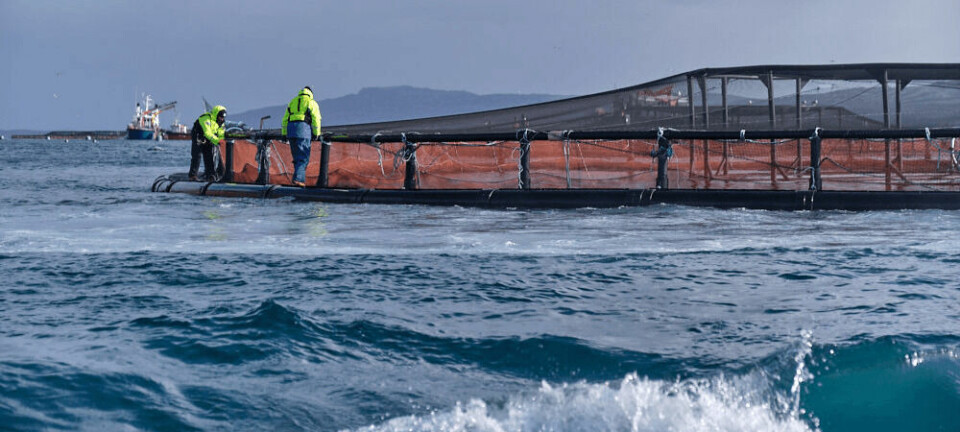
All going swimmingly on offshore salmon farm
Salmar, co-owner of Scottish Sea Farms, has given a detailed update on the progress of the world's first offshore salmon farm, Ocean Farm 1, positioned off the Norwegian coast.
Salmar's biology and nutrition manager, Bård Skjelstad, updated an audience of more than 400 people at the Tekmar 2017 event in Trondheim.
Approximately one million smolts were put out in late September. The fish had an average weight of between 270 and 280 grams and the smallest weighed 128 grams.

"The transfer went smoothly. We had to make seven trips with fish, partly in bad weather, so it all took a bit longer than planned. But at the same time, we adjusted the procedures a bit, so we took something from it," said Skjelstad.
Focused on technical issues
Timetables were calculated on the basis of normal smolt layouts, which are very much controlled by daylight and finish well before dark.
"We have so many lights on Ocean Farm 1 that we saw that we could stretch this out," said Skjelstad.
There are also cleaner fish - wild-caught wrasse and farmed lumpfish - in the cage.
"So far we have focused on technical issues. There have been a lot of people out on the cage, with many sub-contractors who both adjust technical quibbles, and finalise and document their deliveries."
During this time, the weather gods have not smiled on Salmar.
Very stable cage
"The period has been marked by bad weather. Therefore, there has been little opportunity to allow people who do not absolutely need to be out there, to go out there," said Skjelstad.
Although the weather has been rough, Ocean Farm 1's construction has proved its worth.
"For those of us who have been accustomed to being on a floating collar in a lot of wind this is very fascinating. The cage is completely still and very stable," said Skjelstad.
When the fish were put out, the farmers started very traditionally.

"We started with surface feeding on the fry and watched their appetite by throwing feed like we used to. Now, however, we have gone over completely to the underwater feeding at 8-9 metres. We can obviously feed on the surface, but we have a strategy of underwater feeding to avoid infestation, and it seems to work very well," explained Skjelstad.
He stressed they have so far managed to feed whatever the weather, and believes the farm's water current feeding system has contributed to this.
"We also have several feeding point so we can align with the current."
Sonar and other sensors
For the time being they are using traditional camera surveillance for feed control.
"We also have sonar under the cage and other sensors, so we are discussing whether we should apply even more technological monitoring of wastage."
It was reported last month that Salmar had lice in Ocean Farm 1, something that wasn't a big surprise for Skjelstad.
"It was expected, because we are after all on the inside of the islands, but it is very gratifying that the total is very low. The total we got a few weeks ago seems to be a peak, it is not growing, and when we see the adult lice, we see no sessile lice," he said.
The cage is packed with different sensors. He lists all 15 different types, ranging from traditional oxygen and temperature gauges, to hydrophones (underwater microphones), a fluorimeter (which can measure, for example, algal blooms) and motion sensors.
Fish have doubled in weight
"When the sensors are working 100 per cent, we have said we will hire fish psychologists to analyse all the data," said Skjelstad. "The technology seems to be working fine so far. We've had some small scale power problems, but everything works as it should. So we have a justified hope that we will manage to improve the conditions for fish, versus a traditional construction."
Even though an in-depth analysis of all the data has not yet been done, Skjelstad thinks that overall things look good.
"We see that the fish thrive, have a good appetite and have doubled in weight. You will find some fish on the surface, but essentially they stay deep," he said.
"Oxygen measurements we make at the centre of the cage are similar to those we make at the outer edge. We were interested about how the water flow would be affected, but roughly, everything we could see looks good."
Successful stocking
Also external current and wave conditions are as expected, even with a lot of inclement conditions in the early days.
"In short, there has been a successful stocking, the fish have endured it all very well, they eat well, we've had very few mortalities and go into the winter with few lice."
Skjelstad emphasises that they are naturally excited about how this goes when the weather gets warmer.
"If we get more lice, we have traditional tools, if the cleaner fish aren't enough."
The plan is to pump the fish into a wellboat and carry out delousing there.
"We also have some projects concerning non-traditional louse treatments, but we do not want to present them yet," said Skelstad.
The first cycle will be completed in 2018, and when the fish are harvested, they hope to make Ocean Farm 1 even better and put out even more fish.




















































